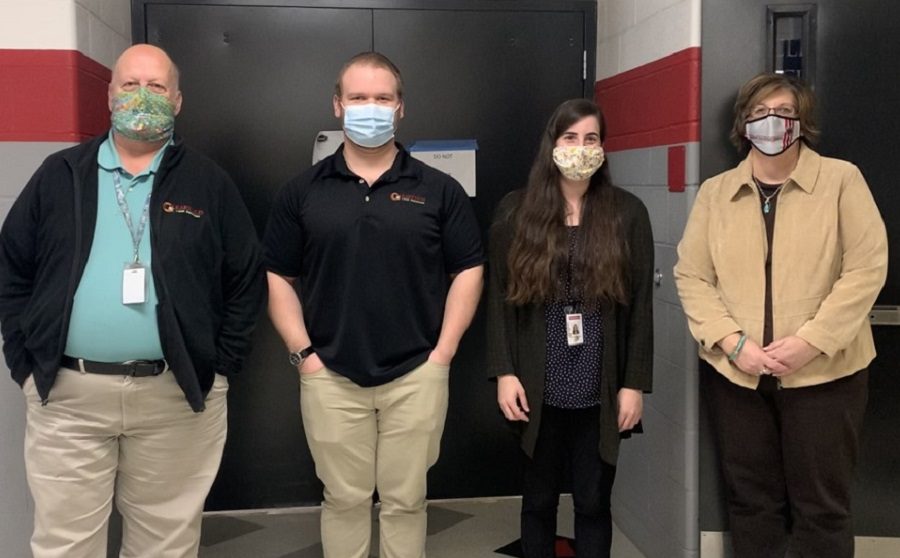Mr. Stibitz gives insight on getting technology help at home
From left to right, Mr. Stibitz, Mr. Quick, Ms. Beichner, and Ms. Liberatori. Missing from the picture, Mr. Moore.
December 21, 2020
Technology can be difficult to understand. Especially for us High Schoolers who are not so technology savvy. From shutdowns to A/B schedules, this year is full of unexpected turns and a lot of technology usage. If you are having difficulties with your laptop in any way, I have conducted a Q&A with our director of technology, Mr. Stibitz to guide you through the process.
Q: How should students contact tech in case of issues? Can students call in? If so, what is the number? What are the various ways students can contact tech?
Mr. Stibitz: “There are two ways to get Tech assistance depending on whether you are in the building or at home according to the hybrid A/B schedule.
“If you are in the building, ask for a pass to come to the Tech Department and a technician will either fix your issue on the spot or give you a loaner laptop until yours can be repaired.
“If you are at home, call 814-765-5511 ext 7000 to speak with a technician. They will do everything they can to help you over the phone or with a remote connection to your laptop.”
Q: Are students able to come into the school and get tech help?
Mr. Stibitz: “If you are at home for the day and call the Tech Support phone number, we may ask you to bring the laptop in so we can physically address the problem. If that is not possible, we then advise you to bring it to Tech the next day. We ask that you don’t come in on an at home day unless specifically asked to do so.”
Q: Can students still come into the library for help?
Mr. Stibitz: “The staff at the library can offer some assistance. This is confined to password resets or borrowing a charger if yours was left at home.”
Q: Are there available hotspots for students to connect to from the school?
Mr. Stibitz: “Unfortunately, the school does not offer hot spots to students currently. We realize that some families do not have connectivity at home, and we are looking at various ways to help those families gain access to the Internet. There are several large-scale initiatives being considered by the state and federal governments to provide the necessary infrastructure to rural areas so this can happen, but we will not see the outcome for many months to a few years.
“As most of you know, technology plays a large part in most everything we do today. The single most important message I would like to convey about working with technology is that the devices you use work their best when you care for them correctly. Keep the updates current, use a protective case when carrying the device and always be conscious of where you place them when not in use.”
Q: What steps should students take before contacting tech?
Mr. Stibitz: “Most importantly, restart your computer! This often solves many problems with the operating system or application not working correctly.
“After a restart, if you still have an issue, try to copy any “error messages” that may pop up. This information is often useful to the technician who will be helping you.
“If the issue is that you can’t connect to the Internet, check your wireless connection at the device and be sure that ‘Airplane Mode’ is off. If at home, sometimes it is helpful to turn your modem and routers off and back on to reestablish a connection.”


